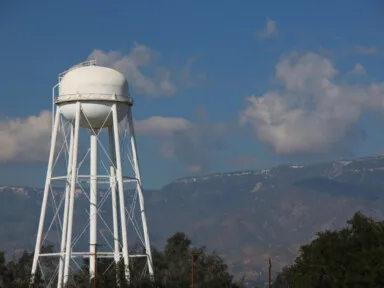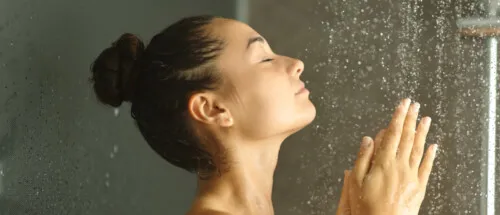It’s important to have safe, clean water in your home, whether for drinking or cleaning dishes. A wide range of factors can affect the cleanliness of your water, from whether you have city vs well water to the different types of water treatment. With several high-profile water quality issues in the country in recent years, it’s important to know how your state ranks for water quality.
Let’s dive into the importance of good water quality for public health, explore how each state’s water quality is assessed, and break down water quality by state.
In this article:
- Understanding Water Quality Metrics
- State-by-State Water Quality Rankings
- Factors Influencing State Water Quality
- How to Check Your State’s Water Quality
- Improving Water Quality in Your Home
Understanding Water Quality Metrics
First, you need to learn about the criteria for assessing water quality to understand the importance of water quality.
Common Contaminants Monitored
It’s a common misconception that natural sources, like spring water or artesian water, are naturally purified. While many groundwater supplies, unlike surface water, go through a form of filtration as they pass through rock and sediment, they’re still susceptible to common contaminants like lead, PFAS, and bacteria.
- Lead is a common pollutant in water supplies because it can leach into the water as old pipes made with lead corrode.
- PFAS (perfluoroalkyl or polyfluoroalkyl substances), also known as forever chemicals, are found in many products and can infiltrate a public water supply via pollution.
- Bacteria, such as E. coli, can enter water if it comes into contact with sewers, animal waste, and other contaminants.
Standards and Regulations
The United States Environmental Protection Agency (EPA) sets federal regulations for drinking water, stipulating that no more than 90 contaminants can be found in a drinking water supply. Every five years, the EPA looks to the Unregulated Contaminant Monitoring Program to add to the official list of contaminants.
Under the Safe Drinking Water Act, each state also has the power to set specific water quality standards, whether monitoring data for a specific contaminant or requiring regular testing of water supplies.
State-by-State Water Quality Rankings
Because water quality varies greatly by state, it’s important to know where your state stands and how you can mitigate any water issues. Here, each state is ranked from best to worst water quality.
| Ranking | State |
| 1 | Hawaii |
| 2 | Tennessee |
| 3 | Alabama |
| 4 | South Carolina |
| 5 | Massachusetts |
| 6 | Kentucky |
| 7 | Georgia |
| 8 | Florida |
| 9 | Maryland |
| 10 | Ohio |
| 11 | California |
| 12 | Delaware |
| 13 | Mississippi |
| 14 | Minnesota |
| 15 | Virginia |
| 16 | North Carolina |
| 17 | Nevada |
| 18 | North Dakota |
| 19 | New York |
| 20 | Rhode Island |
| 21 | Illinois |
| 22 | Missouri |
| 23 | Utah |
| 24 | Washington |
| 25 | New Jersey |
| 26 | Arkansas |
| 27 | Nebraska |
| 28 | Wisconsin |
| 29 | South Dakota |
| 30 | Iowa |
| 31 | Texas |
| 32 | Arizona |
| 33 | Colorado |
| 34 | Kansas |
| 35 | Louisiana |
| 36 | Michigan |
| 37 | Connecticut |
| 38 | Indiana |
| 39 | Oregon |
| 40 | Pennsylvania |
| 41 | New Mexico |
| 42 | New Hampshire |
| 43 | Idaho |
| 44 | Wyoming |
| 45 | Vermont |
| 46 | Oklahoma |
| 47 | West Virginia |
| 48 | Montana |
| 49 | Maine |
| 50 | Alaska |
Top States with the Best Drinking Water Quality
Hawaii beats the rest of the states with delicious, crystal-clear water mainly sourced from underground aquifers and groundwater. Tennessee and Alabama rank second and third, respectively, thanks to a variety of water sources.
The following ten states have the best drinking water in the country:
- Hawaii
- Tennessee
- Alabama
- South Carolina
- Massachusetts
- Kentucky
- Georgia
- Florida
- Maryland
- Ohio
States Facing Water Quality Challenges
Alaska lands in 50th place for the worst water quality in the U.S. Some of the state’s common contamination issues include poorly constructed septic systems and corroded underground storage tanks. Maine is the second worst state in the country due to the large amounts of contaminants and toxic pollution found in water sources.
Here are the ten worst states for water quality in the U.S., starting with number 50, Alaska:
- Alaska
- Maine
- Montana
- West Virginia
- Oklahoma
- Vermont
- Wyoming
- Idaho
- New Hampshire
- New Mexico
Factors Influencing State Water Quality
Water quality varies greatly from state to state because of geological differences, like mountain snowmelt versus aquifers, and human impact, such as higher pollution levels.
Natural Factors
The type of natural water resources available in your state can greatly impact overall water quality. For example, Colorado has good water quality because of its proximity to the snowmelt of the Rocky Mountains. In comparison, Arizona has significant water quality issues primarily caused by the hard minerals in the state’s desert soil and high levels of contaminants.
Human Activities
Unfortunately, human intervention also causes great destruction to water supplies, from industrial pollution to agricultural runoff and urban development. For example, when animal waste contaminates water, it can cause the growth of potentially harmful bacteria, and construction can create irreversible changes to water resources, leading to detrimental erosion or flooding.
If you live in proximity to one of these examples, there’s a good chance that it’s negatively affecting the quality of your water, unless you have your own filtration system in place.
How to Check Your State’s Water Quality
If you’re unsure about the water quality in your state, you can reference the data in the EPA’s water quality data portal. Your state may also have resources to inform you about the safety of your drinking water, or you may be able to request that your water be tested. Visit your state or local government website for more information.
Improving Water Quality in Your Home
If your state has low water quality, you can take matters into your own hands by installing a whole home water filtration system to target your specific water issues, whether it’s reverse osmosis, activated carbon, or UV filtration. Keeping an eye out for indicators of poor water quality, like hard water signs, and regularly testing your household’s water supply will help ensure that you aren’t ingesting potentially harmful contaminants.
Schedule a free test with Leaf Home Water Solutions to receive an accurate picture of your home’s water quality. Our local water experts use fast, precise digital testing to identify common problems like hard water, heavy metals like iron and copper, and chemicals like chlorine and nitrates.




